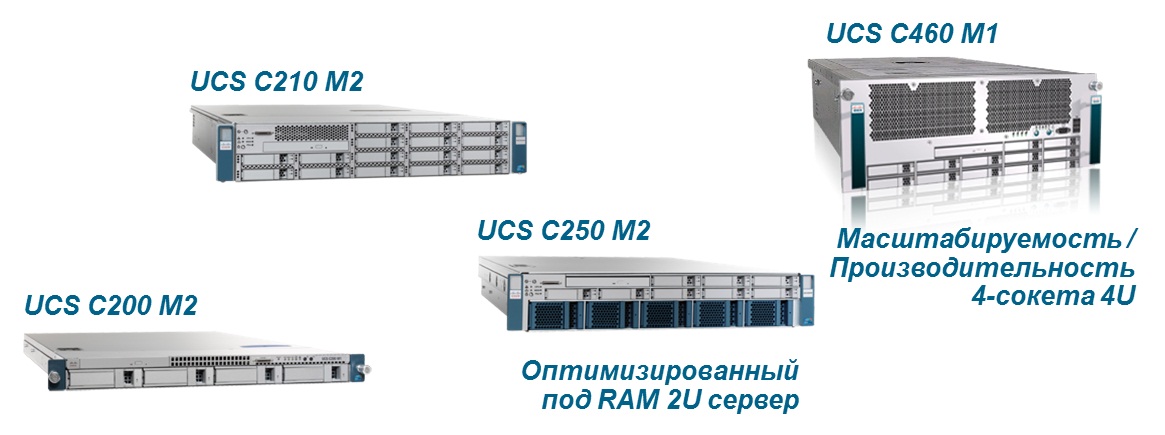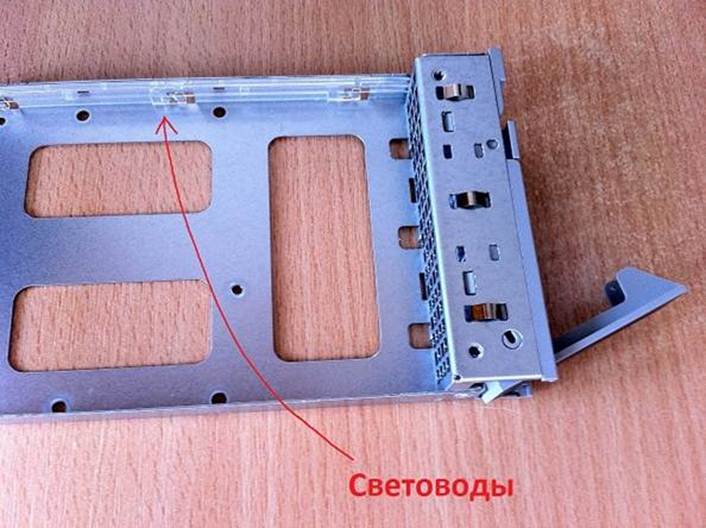Cisco is engaged in servers?
About six months ago, I first heard about the fact that Cisco not only produces network equipment, but also took up the server business. Rummaging around the Internet, it turned out that Cisco Blade-server systems are now very successful and many large customers are already using them in their infrastructures. According to IDC, in 2011, Cisco ranked 3rd in the world in sales of Blade systems, overtaking DELL, Fujitsu and SUN.
But what if I need a regular Rack server? It turns out that in this segment, Cisco is releasing several interesting solutions. At the moment, 4 types of servers are available:

Having received 2 servers - C200 and C210 and having twisted them in my hands a little, I decided to write this note.
Honestly, some negative aspects immediately caught my eye: the top cover is difficult to remove, the buttons for removing the disks work a little tight, there are no USB and VGA connectors in front (instead of them there is a special connector that connects a cable with USB and VGA outputs). The server bundle does not come with driver disks and additional software, although I want to note that Windows 2008 was no problem, and I didn’t even have to download anything from the manufacturer’s website.
Now for the good points. In both models, you can install up to 2 power supplies, which undoubtedly adds reliability. In addition, the power supplies from the C200 and C210 fit together, which makes it easier to find a replacement component. Considering to be a trendsetter in network technologies, Cisco could not leave its servers without a high-quality network infrastructure: each server comes with a full-fledged IPMI controller, which by default can transmit high-quality video and allows you to mount remote CD / DVD / iso. The IPMI controller is called CIMC - Cisco Integrated Management Controller. What was surprising to me was that CIMC, unlike iLO Advanced for HP or iDRAC Enterprise for DELL, is delivered absolutely free in any server configuration. The interface is intuitive,
Example of a CIMC control screen: I

accidentally discovered that on servers with 3.5 ”disks, instead of stubs for disks, there are slides. Having called Cisco representatives, I asked if it is possible to use third-party disks in these slides, because they even come with optical fibers, to which I received a negative answer. Just in case, I checked Seagate drives, similar to the models of the native Cisco drives. Work! It turns out that the Cisco UCS C200 server can be used as an excellent replacement for self-assembled servers such as Supermicro, etc.

Another interesting feature of the Rack-execution servers was the ability to connect them to the Blade infrastructure. That is, any server can be connected to Fabric Interconnect modules from the Blade system and gain access to complete server management, from temperature monitoring on memory modules and setting up virtual interfaces, to fine-tuning BIOS parameters and boot options over the network.
In conclusion, I want to say that although Cisco has begun to produce rack-mount servers, the portfolio of their offers has not yet been understaffed. To fully participate in the struggle for the server market, the company lacks Tower-execution servers. In other parameters, Cisco can now compete with manufacturers such as HP, IBM and DELL.
MUK-Service - all types of IT repair: warranty, non-warranty repair, sale of spare parts, contract service
But what if I need a regular Rack server? It turns out that in this segment, Cisco is releasing several interesting solutions. At the moment, 4 types of servers are available:

Having received 2 servers - C200 and C210 and having twisted them in my hands a little, I decided to write this note.
Honestly, some negative aspects immediately caught my eye: the top cover is difficult to remove, the buttons for removing the disks work a little tight, there are no USB and VGA connectors in front (instead of them there is a special connector that connects a cable with USB and VGA outputs). The server bundle does not come with driver disks and additional software, although I want to note that Windows 2008 was no problem, and I didn’t even have to download anything from the manufacturer’s website.
Now for the good points. In both models, you can install up to 2 power supplies, which undoubtedly adds reliability. In addition, the power supplies from the C200 and C210 fit together, which makes it easier to find a replacement component. Considering to be a trendsetter in network technologies, Cisco could not leave its servers without a high-quality network infrastructure: each server comes with a full-fledged IPMI controller, which by default can transmit high-quality video and allows you to mount remote CD / DVD / iso. The IPMI controller is called CIMC - Cisco Integrated Management Controller. What was surprising to me was that CIMC, unlike iLO Advanced for HP or iDRAC Enterprise for DELL, is delivered absolutely free in any server configuration. The interface is intuitive,
Example of a CIMC control screen: I

accidentally discovered that on servers with 3.5 ”disks, instead of stubs for disks, there are slides. Having called Cisco representatives, I asked if it is possible to use third-party disks in these slides, because they even come with optical fibers, to which I received a negative answer. Just in case, I checked Seagate drives, similar to the models of the native Cisco drives. Work! It turns out that the Cisco UCS C200 server can be used as an excellent replacement for self-assembled servers such as Supermicro, etc.

Another interesting feature of the Rack-execution servers was the ability to connect them to the Blade infrastructure. That is, any server can be connected to Fabric Interconnect modules from the Blade system and gain access to complete server management, from temperature monitoring on memory modules and setting up virtual interfaces, to fine-tuning BIOS parameters and boot options over the network.
In conclusion, I want to say that although Cisco has begun to produce rack-mount servers, the portfolio of their offers has not yet been understaffed. To fully participate in the struggle for the server market, the company lacks Tower-execution servers. In other parameters, Cisco can now compete with manufacturers such as HP, IBM and DELL.
MUK-Service - all types of IT repair: warranty, non-warranty repair, sale of spare parts, contract service
